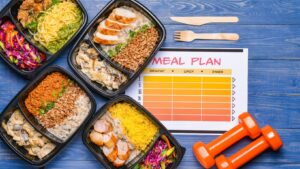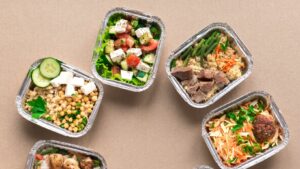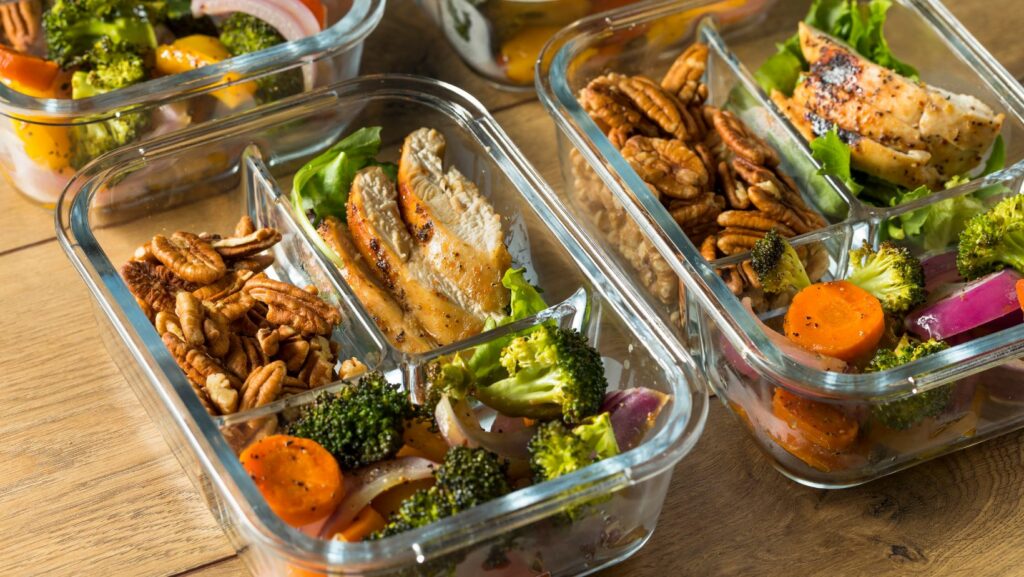Navigating college life often means juggling classes, assignments, and social activities, leaving little time for meal prep. For students, finding simple yet satisfying meals is essential to keep energy levels high without breaking the bank. Fortunately, with a bit of creativity and some basic ingredients, whipping up delicious dishes is easier than it seems.
College meals don’t have to be bland or repetitive. With a focus on simplicity, students can enjoy a variety of flavors without spending hours in the kitchen. From quick stir-fries to hearty sandwiches, there’s a range of options that cater to different tastes and dietary needs. These meals not only save time but also encourage healthier eating habits.
Why Simple College Meals Matter
 Simple college meals significantly impact students’ well-being and daily routine. They save time, crucial for balancing academic and social commitments. With limited time, students benefit from quick, nutritious options that require minimal preparation. Budget constraints often limit students’ access to varied ingredients. Simple meals reduce costs by using inexpensive staples like rice, pasta, beans, and eggs. This approach encourages smarter food choices and financial management.
Simple college meals significantly impact students’ well-being and daily routine. They save time, crucial for balancing academic and social commitments. With limited time, students benefit from quick, nutritious options that require minimal preparation. Budget constraints often limit students’ access to varied ingredients. Simple meals reduce costs by using inexpensive staples like rice, pasta, beans, and eggs. This approach encourages smarter food choices and financial management.
Nutrition plays a key role in maintaining energy levels and concentration. Simple meals often focus on balanced nutrition, providing essential vitamins and minerals for cognitive performance and physical health. Cooking fosters independence and life skills acquisition. Simpler recipes offer a practical introduction to cooking techniques that students can enhance over time. Ultimately, prioritizing simple college meals supports students’ physical, financial, and personal growth throughout their academic journey.
Simple College Meals
For quick and nutritious college meals, starting with essential ingredients simplifies meal prepping while maintaining balance in taste and nutrition.
Pantry Staples
 Pantry staples like rice, pasta, and oats provide versatile bases for numerous meals, offering both flexibility and affordability. Rice works well in stir-fries and casseroles, while pasta combines effortlessly with sauces and proteins. Canned beans and lentils add protein and fiber to dishes such as stews and salads. Spices like salt, pepper, and paprika elevate flavors without complicating preparation.
Pantry staples like rice, pasta, and oats provide versatile bases for numerous meals, offering both flexibility and affordability. Rice works well in stir-fries and casseroles, while pasta combines effortlessly with sauces and proteins. Canned beans and lentils add protein and fiber to dishes such as stews and salads. Spices like salt, pepper, and paprika elevate flavors without complicating preparation.
Fresh Produce
Including fresh produce enhances the nutritional value and taste of college meals. Ingredients such as bell peppers, onions, and spinach diversify recipes with color and nutrients. Tomatoes contribute to sauces and salads, and bananas provide an easy snack or breakfast addition. Seasonal fruits and vegetables, purchased locally, optimize freshness and cost-efficiency.
Convenient Proteins
Convenient proteins play a vital role in supporting energy levels. Eggs offer a quick meal option when scrambled or boiled. Canned tuna provides a convenient source of protein for sandwiches and salads. Rotisserie chicken, when pre-cooked, can be added to various recipes, slashing meal prep time considerably. Tofu offers a plant-based alternative for stir-fries and bowls.
Meal Prep Tips For College Students
Effective meal prep strategies help college students save time and money while maintaining a balanced diet. By planning and utilizing quick techniques, students can prepare simple, nutritious meals.
Planning Your Week
 Organizing meals for an entire week allows college students to streamline their cooking routine and reduce last-minute snack runs. First, he should assess his class schedules and identify days with limited time for meal prep. Then, using a planner, he can outline meals, incorporating staple ingredients like rice and pasta for variety and cost-effectiveness. Additionally, creating a grocery list based on planned meals prevents impulse buying and helps stick to a budget. By dedicating a specific day for grocery shopping and batch cooking, he streamlines the weekly meal process.
Organizing meals for an entire week allows college students to streamline their cooking routine and reduce last-minute snack runs. First, he should assess his class schedules and identify days with limited time for meal prep. Then, using a planner, he can outline meals, incorporating staple ingredients like rice and pasta for variety and cost-effectiveness. Additionally, creating a grocery list based on planned meals prevents impulse buying and helps stick to a budget. By dedicating a specific day for grocery shopping and batch cooking, he streamlines the weekly meal process.
Quick Cooking Techniques
Mastering quick cooking techniques is essential for time-pressed college students. Stir-frying, for instance, offers rapid preparation using ingredients like bell peppers, onions, and protein such as chicken or tofu. Another effective method involves using a microwave for steaming vegetables or reheating leftovers, saving both time and energy. Students can also utilize a slow cooker or an electric pressure cooker for easy, hands-off meal preparation, ideal for creating meals like chili or stew while attending classes or studying. With these techniques, they can consistently prepare healthy meals with minimal effort.

